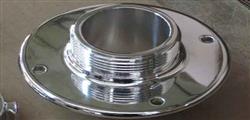ASP ULTRA COATING
Featured Products
Highest quality standards are achieved through the implementations of latest technology, decades of experience and everlasting moral values , which have helped us to retain our customers as well as multiply them.
Welcome to ASP ULTRA COATING
Tin Plating

Tin Plating is used in applications where corrosion resistance is desirable and when plating intricate surfaces or small or deep bores, for a uniform thickness and medium to high hardness. The process is limited to certain types of metals and it requires a strict, high level of quality control. Electrolytic tin is deposited in a direct current process on a cathodically connected product. An aqueous solution of tin salt and a tin anode are used. The use of organic additions to the baths enables decorative bright and functional deposits. Both acid and alkaline tin baths are employed. Apart from pure tin, the metal is also applied as a component in alloy baths, such as in lead-tin
Purpose Of Plating
Tin Plating work improves corrosion resistance, increases the surface hardness of the material, provides a uniform and dense coating, and, in many cases, maintains the same surface finish the material had before plating. Tin Plating consists of the deposition of a Tin alloy onto the metal surface by a chemical bath, not by electrodes or external electrical charges. This permits the plating of hard to reach surfaces, such as small or deep bores and intricate shapes. Coating thicknesses for engineering uses vary from 0.0005 inch to 0.0015 inch
When To Use Tin Plating
Tin plating can be used in the as-deposited condition or may be hardened, depending on the intended service conditions.
- For Corrosion Resistance
- For Wear Resistance in Hard to Reach Areas
Our Vision
* To embrace new technologies and methods. * To give unsurpassed products and services to the clients. * To constantly look for improvement and changes.










